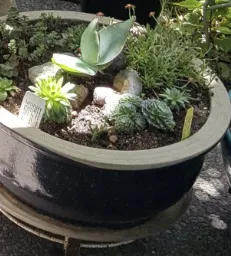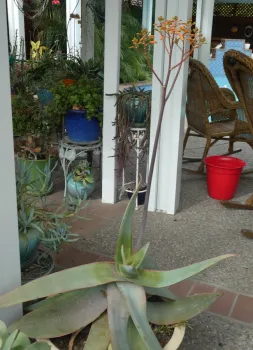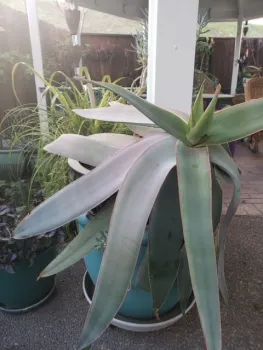Six years ago, I added a cute little aloe to my succulent collection. I was drawn to its “soft to the touch” greyish green leaves with vertical stripes and smooth edges without spines or thorns. At the point of purchase, I didn't know this aloe was a slow grower that would eventually dwarf its pot. Or that its soft leaves and smooth edges really meant fragile and easily damaged especially during repotting. I had no clue that out of the more than 500 species of aloes, this particular plant is a rarity being one of the two lesser harder-to-grow subspecies of Aloe striata.
Named after the Karasberg Mountains in Nambia, Aloe karasbergensis was discovered in the mid-1920s by botanist Neville Stuart Pillans who added it to his Rosebank garden collection in Capetown, South Africa. I now see why. I've enjoyed its tenacity, surviving my backyard and Vacaville's summer heat. This unusual aloe still sits beneath the dappled shade of a crape myrtle tree and a patio umbrella — quite happy for now anyway in the original well-draining shallow ceramic pot into which I first placed it.
You'll notice below three photos showing its growth. Over the years, I added scoops of soil to the pot when needed and watered the plant when dry. As this intriguing aloe eventually grew too big for its pot, I tackled the issue by simply placing the ceramic pot atop a larger container with only minimal damage to a couple of leave tips.
2015: The “cute little” baby stage:

2019: The “doable moveable” mid-size stage:

2021: The “fragile easily damaged” big stage


